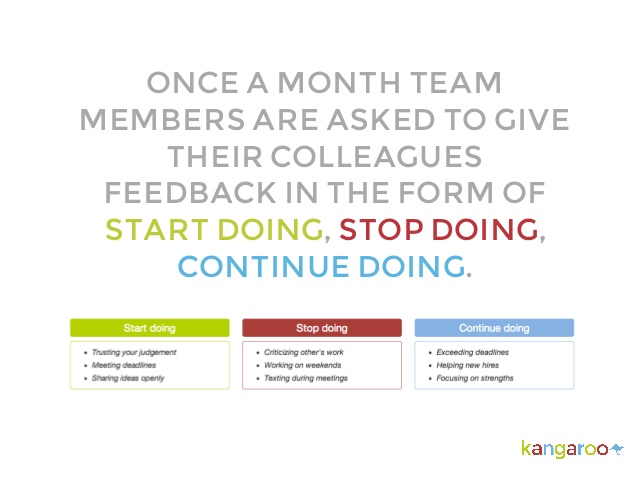If you take a look at tech giants like Apple and Microsoft, they have one thing in common: a well-functioning and high performing team. These companies have understood how to improve team performance— by honing their employees, and particularly, ensuring each team is equipped with the best resources and characteristics. By investing in their teams, these tech giants have built high performing teams and ensured excellent work outcomes from them.
It’s not hard to replicate how these tech giants function – you just need to follow the high performing teams model.
Say, what?
Industry leaders swear by a set of characteristics that set the foundation of a high performing team. By following these principles, your company can also build teams that are consistent and ensure the quality of work without delays.
Depending on personal priorities, each person would list different characteristics that can help to improve team performance and show high results from the team’s work.
However, let’s look at the top 6 characteristics that are proven to form the foundation of a high performing team. Your action plan for improving team effectiveness!
How to improve team performance – characteristics to build
1. Adaptability
For a high performing team, the end result is more important than being rigid and sticking to the rules. This means adapting and changing the way they work based on data, feedback and of course, the changing industry needs. The way we work— from our task management to our planning strategies— they need to evolve continually.
So, ensure that your team functions in an agile manner and can adapt to new changes. It is crucial to maintain the pace at work. This is the main reason that flexibility improves team performance. Adaptability is a must-have in your team improvement plan.

Also read: How to set a team culture that enables a successful workplace
2. Well-defined, actionable purpose
Here’s the most proven way on how to drive team performance— when setting up your project, the main task at hand for the Project Lead must be to set expectations. This means that before even assigning roles and breaking down the project, a high performing team understands the shared goal. They identify and understand what the team needs to achieve together.
When the entire team is clear on the purpose of the project, the expected outcome, and the different milestones and the structural process involved, every team member will be on the same page. They will be driven to work towards that shared purpose. This also means that team members will be more proactive in coming up with ideas and making decisions that aid the purpose.
3. Clear communication and open feedback
One of the main causes of a high performing team is a credit to how well each team member interacts with one other. Communication is a key for success within any social relationship but it rings truer within a work setting. By being clear about each other’s roles and tasks, and being vocal when one member hits a roadblock, teams can function more smoothly and avoid hitches.

Set up a culture to communicate more clearly without hesitation to improve team performance and transform your team.
Besides clear communication, teams with impactful results also prioritize feedback within their ongoing process. For instance, some of the best tech startups make it a point to share ongoing projects with team members to receive feedback. When members share information with one another, including those who are not directly involved, they can get feedback from fresh eyes – even things that have been missed so far.
This also helps team members identify each other’s skills, capabilities and untapped opportunities that they could address together.
Also read: 10 team-building events and activities to spice up work routines
4. Trust and mutual respect
Communicating and setting up a system for feedback is bound to strengthen your team and improve how they work. It is crucial to prioritize trust and respect among team members. A high performing team is well-balanced, where every member is highly valued for their contributions and given due credit for what they bring to the table.
Building trust among members also means breaking down any culture of bad-mouthing members and encouraging the team to be more open with their feelings towards one another. A high performing team focuses on transparency and ensures that all members remain on good terms.
5. Pragmatic
While idealist thinking is a great way to advance your organization, on-ground work is likely to thrive with pragmatic thinking. A high performing team is usually working on smaller, actionable projects. They are fully focused on the processes rather than the bigger idea.
By being pragmatic, teams can think about how to get things done. They can identify what roadblocks they need to tackle rather than only think of long-term and broad goals. High performing teams are practical in their approach and this characteristic ensures discipline and high productivity.
The simple rule being followed here – if it works, it’s right! (unless you eventually find something even better and know you can work towards it)
6. Shared responsibility
Each team member is an integral part of the team, forming a strong network to pick up work between each other and regularly keeping each other informed. When working on a project, every member must be highly enthusiastic about the work at hand, going so far as to treat it like their full responsibility. This means bringing up ideas for improvement, pointing out errors, and being as concerned about the end result as the project lead.
A high performing team shares the responsibility of the project. And, in turn, they come out with excellent outcomes at the end of the day. Another common trait when sharing the responsibility of the project is that team members can rely on one another. Especially when they have difficulty picking up slack or pending work.
By adopting these characteristics, leaders can transform their team to perform much better. But more importantly, they can enable them to make better decisions on their own. We call it, being truly agile together!
Want to enable your team to do more? Here are the team collaboration tools you need this year.



